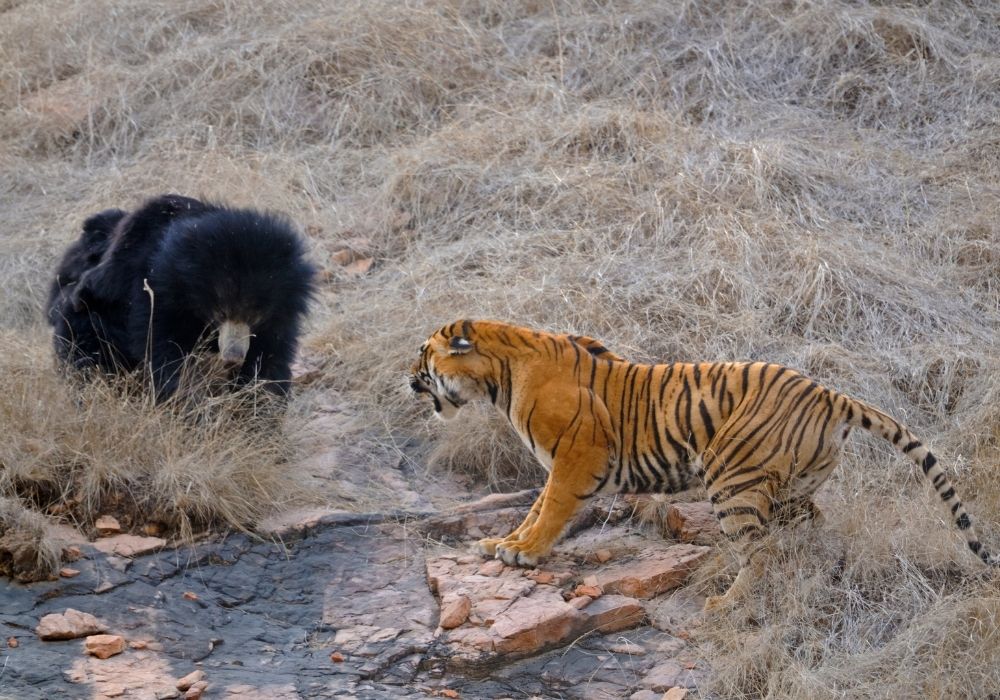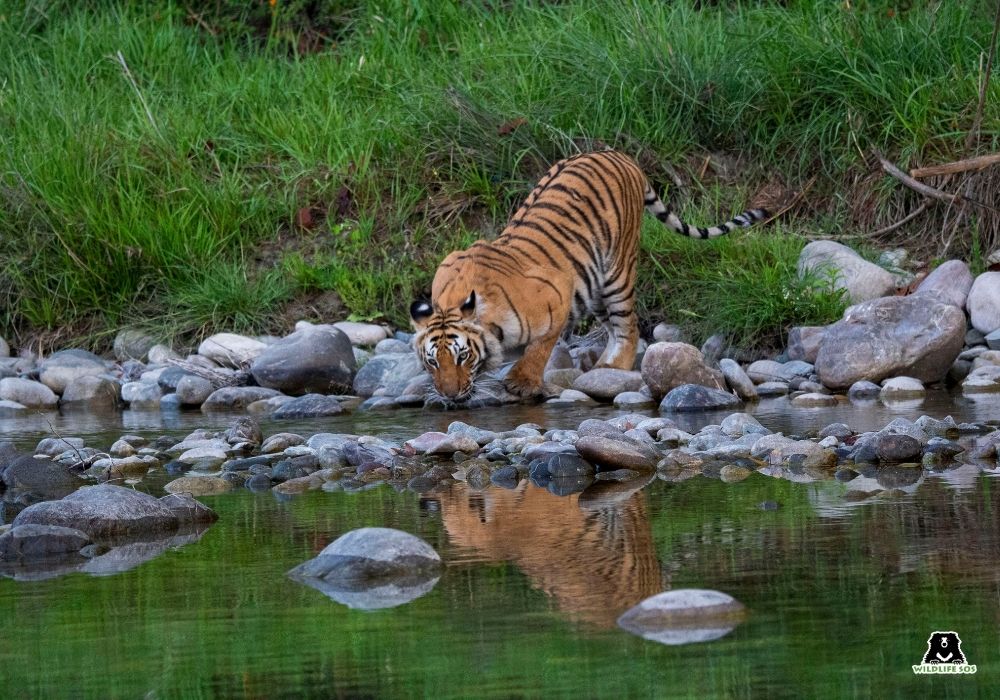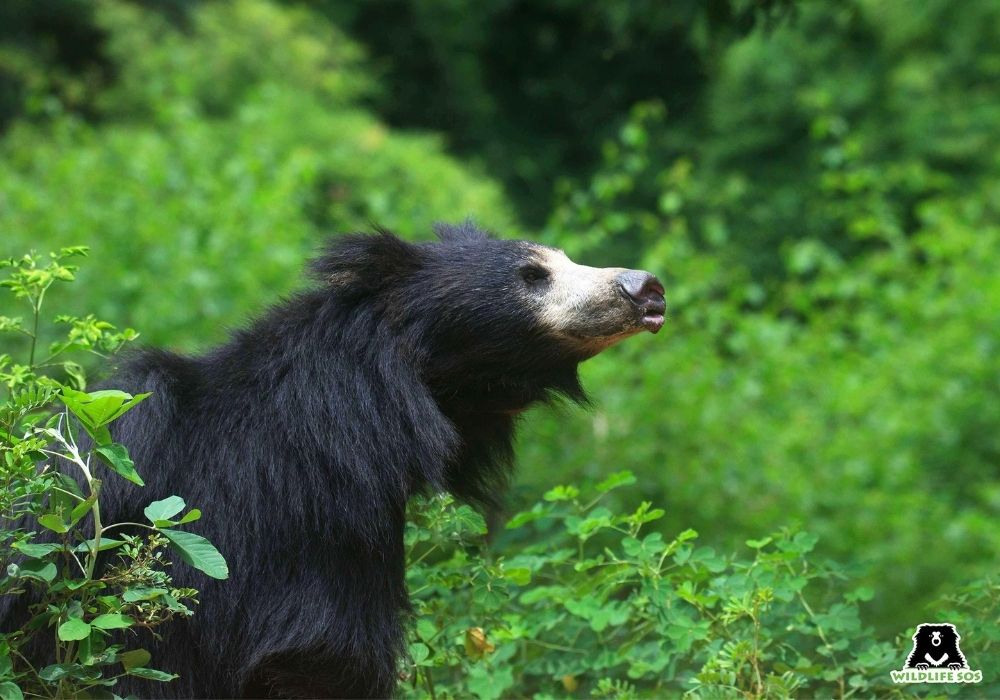Sloth bears and tigers, two of the most iconic and elusive predators of the Indian subcontinent, share a long history of coexistence and conflict. While tigers are the undisputed apex predators, sloth bears possess unique traits that allow them to stand their ground against these powerful cats. But how exactly do these two species interact in the wild? Do sloth bears ever fall prey to tigers, or do they have their own survival tactics? In this Q&A with Wildlife SOS biologist Thomas Sharp, we’ll explore the fascinating dynamics between these two species, shedding light on their evolutionary history, behavioural strategies, and how they navigate the same landscapes in modern-day India and Nepal.

Do sloth bears and tigers share the same habitat?
Yes, sloth bears and tigers have shared the same habitat ever since tigers arrived on the Indian subcontinent about 50,000 years ago. Historically, these two species coexisted across much of the subcontinent. However, today their range overlaps primarily in protected areas, such as national parks in India and southern Nepal, where tigers still thrive. Interestingly, sloth bears have a larger distribution on the Indian subcontinent than tigers at present, partly due to their resilience in degraded habitats.
Do tigers prey on sloth bears?
Tigers do, in fact, prey on sloth bears. In certain protected areas, sloth bears make up roughly 2% of a tiger’s diet. However, sloth bears have evolved an aggressive defence behaviour that helps them survive these encounters. When threatened, sloth bears react fiercely, often deterring tigers. Generally, it’s only the larger male tigers, or groups of subadult tigers, that pose a real threat to sloth bears.

Do sloth bears try to avoid tigers?
Sloth bears don’t actively seek to avoid tigers. They go about their day, evening or night, and only react if they encounter a tiger. If a sloth bear notices a tiger within 3 meters, it typically charges with loud “woofing” noises, which often causes the tiger to retreat. If the tiger is spotted at a distance of 3 to 10 meters, the sloth bear may either charge or flee, depending on the tiger’s behaviour. If the tiger is farther than 10 meters away, the sloth bear will usually continue with its activities but remain alert, monitoring the tiger’s movements.
What is unique about how sloth bears and tigers interact?
What’s truly fascinating about sloth bears is their use of intimidation as a defence strategy. To my knowledge, they are the only animals that routinely use this tactic to fend off tiger predation. When faced with a threat, sloth bears can be fiercely combative, capable of injuring a tiger in a confrontation. While tigers remain the apex predator, sloth bears’ toughness makes them a formidable opponent, often making tigers reconsider whether it’s worth the risk to engage.

Have you learned anything interesting about sloth bear and tiger evolution?
An intriguing aspect of sloth bear and tiger evolution is their timeline on the Indian subcontinent. Sloth bears evolved here about 4-5 million years ago, while tigers only arrived roughly 50,000 years ago. This raises an interesting question: did sloth bears develop their aggressive defence behaviour in response to tigers, or was it already in place before tigers showed up? Likely, sloth bears evolved this behaviour long before tigers, possibly as a defence against large, now-extinct sabre-toothed predators like Dinofelis cristatus and Megantereon falconeri. These formidable cats were similar in size to tigers and would have posed a significant threat to sloth bears.
Anything else you’d like to share about sloth bear and tiger interactions?
Unlike other Asian bear species, such as the Asiatic black bear or sun bear, sloth bears are not skilled climbers. While they can climb trees to forage, they lack the agility needed to escape predators. This is because sloth bears evolved more as diggers than climbers, adapting to dig into termite mounds. Their inability to flee up trees likely played a role in the development of their aggressive behaviour. Unfortunately, this same aggression also leads to frequent attacks on humans, particularly when humans unknowingly approach a sloth bear.







